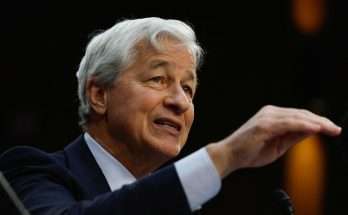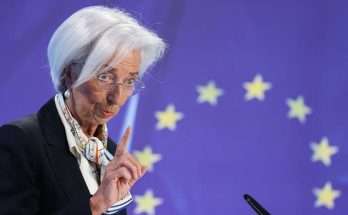
Job growth was much better than expected in November despite the Federal Reserve’s aggressive efforts to slow the labor market and tackle inflation.
Nonfarm payrolls increased 263,000 for the month while the unemployment rate was 3.7%, the Labor Department reported Friday. Economists surveyed by Dow Jones had been looking for an increase of 200,000 on the payrolls number and 3.7% for the jobless rate.
The monthly gain was a slight decrease from October’s upwardly revised 284,000. A broader measure of unemployment that includes discouraged workers and those holding part-time jobs for economic reasons edged lower to 6.7%.
The numbers likely will do little to slow a Fed that has been raising interest rates steadily this year to bring down inflation still running near its highest level in more than 40 years. The rate increases have brought the Fed’s benchmark overnight borrowing rate to a target range of 3.75%-4%.
In another blow to the Fed’s anti-inflation efforts, average hourly earnings jumped 0.6% for the month, double the Dow Jones estimate. Wages were up 5.1% on a year-over-year basis, also well above the 4.6% expectation.
The Dow Jones Industrial Average fell as much as 350 points after the report on worries the hot jobs data could make the Fed even more aggressive. However, stocks shaved most of their losses as the trading session neared its close. Treasury yields initially jumped on the jobs news before turning mixed later.
“To have 263,000 jobs added even after policy rates have been raised by some [375] basis points is no joke,” said Seema Shah, chief global strategist at Principal Asset Management. “The labor market is hot, hot, hot, heaping pressure on the Fed to continue raising policy rates.”
Leisure and hospitality led the job gains, adding 88,000 positions.
Other sector gainers included health care (45,000), government (42,000) and other services, a category that includes personal and laundry services and which showed a total gain of 24,000. Social assistance saw a rise of 23,000, which the Labor Department said brings the sector back to where it was in February 2020 before the Covid pandemic.
Construction added 20,000 positions, while information was up 19,000 and manufacturing saw a gain of 14,000.
On the downside, retail establishments reported a loss of 30,000 positions heading into what is expected to be a busy holiday shopping season. Transportation and warehousing also saw a decline, down 15,000.
The numbers come as the Fed has raised rates half a dozen times this year, including four consecutive 0.75 percentage point increases.
Despite the moves, job gains had been running strong this year if a bit lower than the rapid pace of 2021. On monthly basis, payrolls have been up an average of 392,000 against 562,000 for 2021. Demand for labor continues to outstrip supply, with about 1.7 positions open for every available worker.
“The Fed is tightening monetary policy but somebody forgot to tell the labor market,” said Fitch Ratings chief economist Brian Coulton. “The good thing about these numbers is that it shows the U.S. economy firmly got back to growth in the second half of the year. But job expansion continuing at this speed will do nothing to ease the labor supply-demand imbalance that is worrying the Fed.
Fed Chairman Jerome Powell earlier this week said the job gains are “far in excess of the pace needed to accommodate population growth over time” and said wage pressures are contributing to inflation.
“To be clear, strong wage growth is a good thing. But for wage growth to be sustainable, it needs to be consistent with 2 percent inflation,” he said during a speech Wednesday in Washington, D.C.
Markets expect the Fed to raise its benchmark interest rate by 0.5 percentage point when it meets later this month. That’s likely to be followed by a few more increases in 2023 before the central bank can pause to see how its policy moves are impacting the economy, according to current market pricing and statements from several central bank officials.
Friday’s numbers had little impact on rate expectations, with traders assigning a nearly 80% probability that the Fed would step down to a half-point increase, according to CME Group data.
“The economy’s big and it takes a long time, many months, for these things to filter through,” Randy Frederick, managing director of trading and derivatives at Charles Schwab, said of the rate increases. “The impact of these rate hikes hasn’t really been felt yet. Powell’s rightfully being a little cautious.”
Powell has stressed the importance of getting labor force participation back to its pre-pandemic level. However, the November reports showed that participation fell one-tenth of a percentage point to 62.1%, tied for the lowest level of the year as the labor force fell by 186,000 and is now slightly below the February 2020 level.


